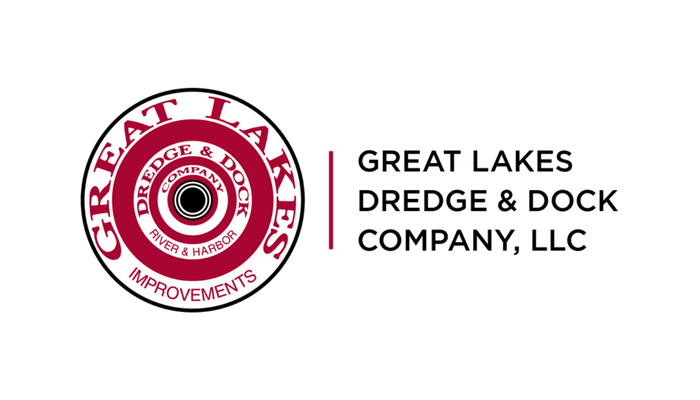
We spoke to a number of facility managers to learn how they plan for winter, knowing that weather can be unpredictable – that is, what happened last year or the year before will not tell you what to expect in the coming winter.
We asked them to answer these questions:
1) What allocations do you consider when planning your winter cost analysis and budget?
2) How did your budget last year stack up? What are the top three things you are going to do differently/better this winter?
Here’s what they told us:

Jeff Hunt
Facility Management Administrator at Kent State University
Kent, Ohio
With the unpredictable northeast Ohio winters, I need to approach my budget and planning based on the worst-case scenario. I need to cover the cost of supplies (de-icers, shovels, walk-off mats, gloves, etc.) and equipment (plows, snow blowers, fuel/oil, equipment maintenance). If the winter is mild, like 2015/2016, I will be left with a surplus that I’ll need to budget for storage and handling until the following winter. I also need to earmark funds for staff overtime and call-back pay.
My budget for 2014-2015 was accurate within +/- 3%, while my budget for last winter (2015-2016) over-estimated labor and supplies by a whopping 25%.
Plans for the 2016-2017 winter will include the following:
1. Construct an onsite storage building for inventory.
2. Pre-buy salt and off-season tools and supplies at reduced rates.
3. Cross-train other department employees to shovel snow and spread salt to reduce maintenance/grounds crew call-back and overtime pay.

Robert Maloney
Operations Director at Bristol Township School District
Bucks County, Pennsylvania
The real thing I focus on is preventative maintenance on all our equipment. After the season ends, I have all of our equipment checked for damage and excessive wear. We make all repairs in the spring and evaluate equipment that needs replacing. We look at new and improved equipment that makes our job more efficient.
Our district just built three new elementary schools that have different conditions for snow removal than the ones they replaced: increased sidewalk-width dimensions and greater square footage of asphalt. We are looking into multifunctional ride-on equipment that will perform year-round grounds work like mowing, snowblowing, and power brooming.
All our work is performed in-house by our maintenance staff. We try to provide them the tools to complete the tasks safely and most effectively. Finally, prior to winter, all our plows are mounted and tested to ensure performance. All our snow blowers and spreaders are also tested, and all of our schools are supplied with salt and calcium. Our warehouse has a pallet of salt and calcium stored for backup.
This past season our budget didn't suffer at all because we only got one real storm. Looking back at that storm and the quick accumulation, I will definitely address how to utilize our manpower better, grouping up teams of 2-3 trucks per school, training our newer employees to plow in deeper conditions, and modifying our piling locations throughout the district.

Paul M. Hiler
Facility Manager at Viox Services
New York, New York
Since we are in the northeast, of course snow plowing is number 1. We also look to anticipate fuel costs and usage. But snow is the single largest variable in our budget and the most difficult thing to predict.
Therefore, it’s important to have a contingency plan to find extra funding when you exceed your snow budget. It isn’t feasible to simply hide extra funds in today's tight budgets, but you need to identify areas where you could cut back and free up funds when the need arises.
Last year is an example of a year with light snowfall, and it was easy to cover the costs with the budgeted amount. The challenge in the following year is to not get complacent and expect every year to be easy. We must plan for all scenarios.

Facility Manager
Before you set a budget you look at a few past winters, then check the long-range forecasts, then decide if you want a seasonal contract or a storm-by-storm contract. This past winter was a-no show on accumulation. My budget for this past year was storm-by-storm. I got lucky this time.
First I will prepare for a bad winter. Second, I will research large companies, since small ones think they can handle storms but they fail when the storms come back-to-back. Third, I will make sure there are strict guidelines on times required for removal and exact job requirements.

Stephen Luyendyk
Facility Services Manager at PCL
Edmonton, Canada
One of the first things that I consider when doing my winter cost analysis is snow-removal costs based on worst-case scenarios of contracted snow removal on a twice-weekly basis. I also factor in current oil prices and compare them to the previous year to determine heating costs for the season, and I always add at least 10% above my estimates to ensure there will be sufficient funds available. One significant cost that always needs to be considered is the human factor. Staff tend to be away ill more frequently through the fall and winter, so I always include these factors in determining my budget as well.
The budget that I developed last year worked out quite well, but one of the things I did not factor into it was the severe drop in oil prices or the forest fires that we have experienced in our province, which severely affected our economy, but this was something that nobody had considered.
The top three things I will do differently when planning for this upcoming winter will be:
1) To not only consider how the oil prices affect my heating costs, but how they will continue to impact the economy and production numbers.
2) To really encourage staff to get their flu shots to reduce the number of sick days used and embrace a wellness culture to reduce general absenteeism.
3) To create more energy-efficient buildings through better window and door systems and better insulation throughout the exterior where possible, and begin replacing HVAC units at the end of their life cycle with more energy-efficient units.

Donna Lemire
Director of Facilities at Trinity Management, LLC
Boston, Massachusetts
For budgeting, we look at the past three years with the line items below: employee salaries (shoveling/salting), shovelers (outsourced for additional hands on), equipment PM & repairs (we have Ventracs, walk behinds, etc.), snow supplies (shovels, ice melt, etc.), snow plowing (outsourced), snow removal (we move our snow to a snow lot – parking is very tight). We look at the last two years for an average of snow amounts.
In terms of how we stacked up, we did well, as we budgeted looking at the last three years and our snowfall was minimal compared to that time period. We added additional equipment and purchased supplies (shovels, etc.) at the end of the season to save money.
Living in New England, we never know if we will be over budget or in budget, since it depends on Mother Nature.

Albert Deveaney
Maintenance Manager, Vesuvius USA
Pittsburgh, Pennsylvania
Each year I get three bids from different vendors to remove snow from the office building that I’m the maintenance manager for, and each year I decide on a price that best fits the budget I’m given.
Last year’s budget was really good, thanks to the new HeatTrak mats. After comparing our overall budget through the years, we noticed a major decrease in costs for snow removal. These cost-saving mats will allow us to supply more HeatTrak mats to other high foot-traffic areas of our building.
These mats also allow less salt residue on the rugs in our office building. Less time spent on removing snow and ice allows for more time on other important areas of our building. Thanks for everything.
David Dodson
Facilities Manager at Cochlear Americas
Centennial, Colorado
I have to estimate the number of potential snow days and then calculate the manpower and ice melt that will typically be utilized on those days. I also look at equipment usage (time) and factor in for maintenance (fuel, oil, parts, labor) and replacement costs based on hours or seasons used. There are also ancillary costs for replacement of broken snow shovels or spreaders. Colorado can receive some serious snowfalls even in the Denver metro area, and planning a budget for snow and ice removal can be a challenge.
Last season actually ended closer to mid-May of this year, we saw two rather severe storms over the last six weeks. My budget was pushed into the red somewhat because of these last two storms, both in manpower and in ice melt.
In looking at developing next year’s budget, I will again estimate the number of snow removal days and plug in my numbers based on current pricing, then add an additional 7-10% to cover increases in all areas (labor, parts, fuel, etc.). I will order my ice melt sooner this upcoming season.
I am considering purchasing more heated mats. They will reduce all of the above-mentioned costs and mitigate my potential for litigation. I’ll also streamline my processes to reduce any duplication of effort.


